Enchanting 9-Day Road Trip to Jordan 🇯🇴, the home of Petra

As October comes to a close, Europe experiences a drop in temperature, prompting many to seek warmer destinations to extend the summer vibes. Following visits to Dubai and Israel during this period, the road trip to Jordan emerged as the ideal choice.
Table of Contents
Practical insights for the road trip to Jordan
Jordan Visa and Travel Essentials:
Before booking our flight, I checked the Jordan visa requirements. This time, an e-visa was necessary, and I applied through the official page of the Jordan Ministry of Interior: Jordan E-Visa.
Jordan Pass:
Consider the Jordan Pass for seamless entry to tourist landmarks. It offers numerous advantages, saving time and eliminating the need for individual entry tickets. Our e-visa was complimentary by entering the Jordan Pass number in the visa application. For more information, visit Jordan Pass.
Mobile Data:
Discovering Airalo was a game-changer, especially for phones with e-SIM functionality. Download it to avoid the hassle of swapping physical SIM cards. Airalo allows easy purchase of e-SIM cards for almost every country, including regional options like Europe or Africa. I opted for the Jordan 30-day, 3GB data plan for USD18.
Local Currency:
The official currency is the Jordanian Dinar (JOD). Cash was essential, especially for accommodation payments, as many places required it. ATMs were available for cash withdrawals, and cards were accepted at shops, restaurants, and petrol stations.
Taxi:
In Amman, we relied on Uber for safe and efficient city travel.
Car Rental:
Choosing Monte Carlo Car Rental was a wise decision. They delivered the car to our hotel, and the process was seamless, with paperwork and payment done by card. Returning the car at their office near Amman airport was convenient, and the company provided excellent service, including full insurance and no surcharge for a second driver. Check out my Google review.
Driving in Jordan:
Driving in Jordan was a straightforward experience. Departing from Amman on a Sunday likely contributed to an easier exit from the city, avoiding major urban rush hours. The main Jordan Desert Highway was smooth, while some other roads demanded heightened awareness due to the presence of potholes.
Dress code
Modest dress is advisable. I have definately avoided shorts and tank tops in the cities and historic areas. I wore t-shirts and skirts covering the knees and felt comfortable doing so. On the other hand I felt comfortable wearing t-shirts and little longer shorts around Dead Sea, in Wadi Rum desert or in Aquaba.
Day 1: Discovering Amman
We arrived in Amman during the early morning hours, taking a taxi to reach our hotel. Finding an accommodation with a 24-hour reception ensured a seamless check-in process. We stayed in Shams Alweibdeh Hotel Apartments. After few hours of sleep, we started our exploration of Amman. Given the city’s size, we decided to use Uber for our first destination – the Amman Citadel.
The Amman Citadel
Located on the highest hill in Amman, the Citadel is a place to see artifacts spanning the Bronze and Iron Ages, along with remnants from the Roman, Umayyad, and Byzantine periods. Presenting our Jordan Pass at the entrance, we proceed to explore the area.
Roman Theater:
Our journey continued with a walk from the Amman Citadel to our next destination, the Roman Theater. The history of the place dates back to 2 AD. It seated up 6000 people.
Making use of our Jordan pass we entered the site. It is impressive. Climbing all the way up the stairs, sit there for a bit and observe the city was absolutely worth it.
Rainbow street
After visiting the Roman Theather, our journey led us to the Grand Husseini Mosque. Unfortunately, ongoing construction and renovations spoiled our view of the mosque. Up next was the Rainbow street. We had walk uphill to reach the street. Rainbow streets is a plesant place with coffeshops and shops. We set down in one of the restaurants to have some lunch.



Our exploration of Amman continued through the busy Downtown streets as we wanted to see The Duke’s Diwan house, which served as the city’s first post office. I must admit that we nearly missed the house in the busy street. After taking a picture we concluded our afternoon program, catching Uber back to our hotel.

Day 2: Amman – Jerash – Dead Sea
Jerash
Our journey started with the convenient delivery of our rental car by Monte Carlo Car Rental to our hotel.
Our first destination was Jerash, situated approximately 52 kilometers away from Amman, a drive that took us around 55 minutes. Upon arrival, we parked at the Jerash Visitor Free parking area, right in front of the landmark entrance. Making use of our Jordan Pass, we entered the area to explore the ruins of the walled Greco-Roman settlement of Gerasa.
Walking around Jerash, we looked at:
Hadrian’s Arch
It was built in 129 AD and was erected to honor and celebrate the visit of the Emperor Hadrian.
Hippodrome:
It dates back to the Roman period, reflecting the city’s historical significance during the Roman Empire. The hippodrome in ancient times was a large stadium or arena primarily used for chariot races and other public spectacles.
The Cardo Maximus
It was likely constructed in the 1st century AD and expanded during the 2nd century AD. The columns are topped with Corinthian capitals, adding to the grandeur of the street. The street itself is paved with large stones, and the remnants of a drainage system can still be seen.
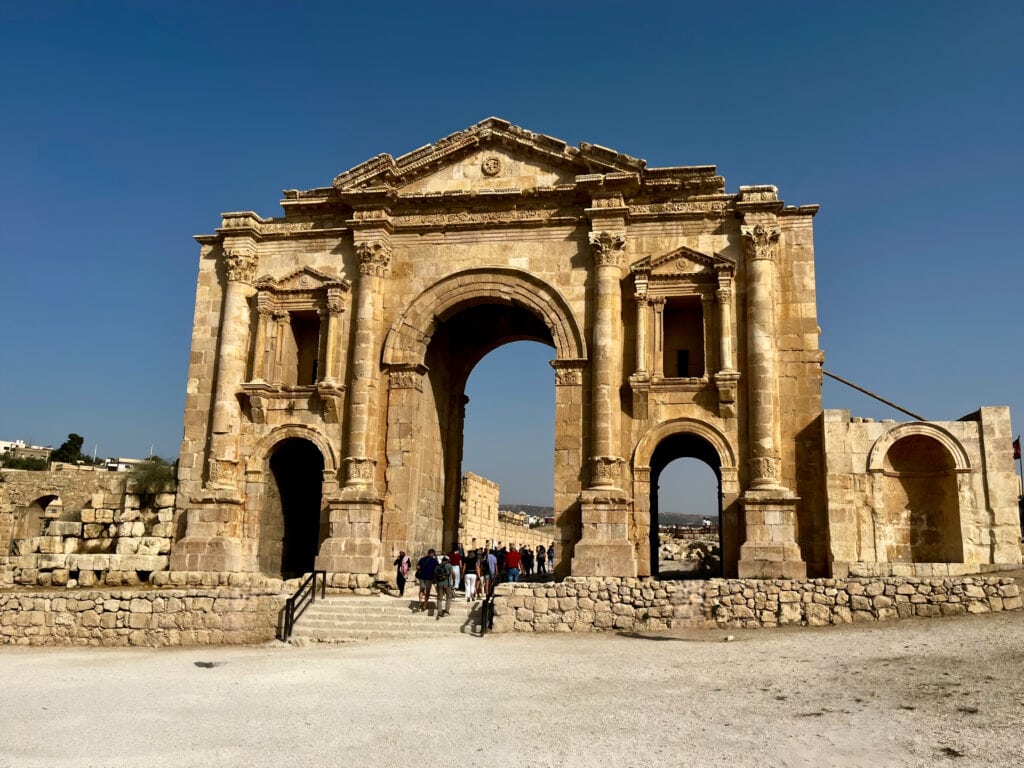


South Theather
A classic Roman-style theater with a semi-circular orchestra and a tiered seating area. It can accommodate a large number of spectators. The theater is known for its impressive acoustics, allowing performances to be heard by the entire audience.
Nymphaeum
The Nymphaeum, finished in 191 AD, is a substantial fountain situated on the Cardo. Its primary function was to enhance the numerous small public fountains already present along the Cardo by serving as a central water source.
Artemis Temple
The temple is dedicated to Artemis, who was a significant deity in ancient Greek and Roman mythology. Artemis was often associated with the hunt, wilderness, and nature.

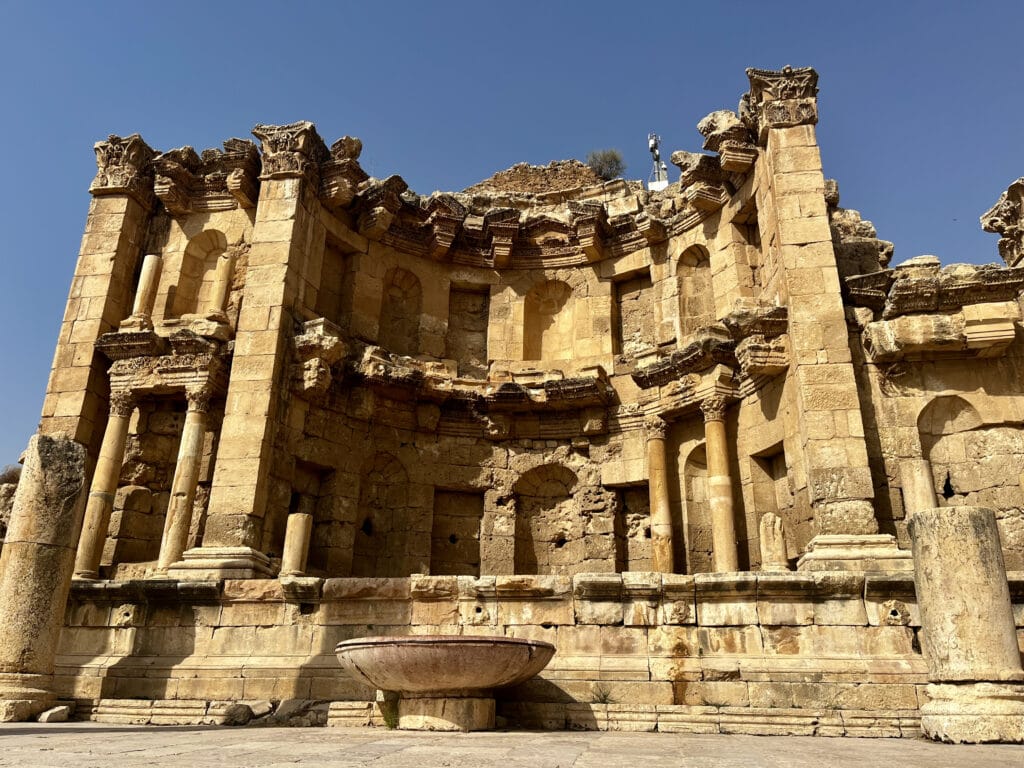

The North Gate is an impressive structure featuring a monumental entrance arch, columns, and other architectural elements characteristic of Roman city gates. Such gates served as both functional entrances and symbolic markers of the city.
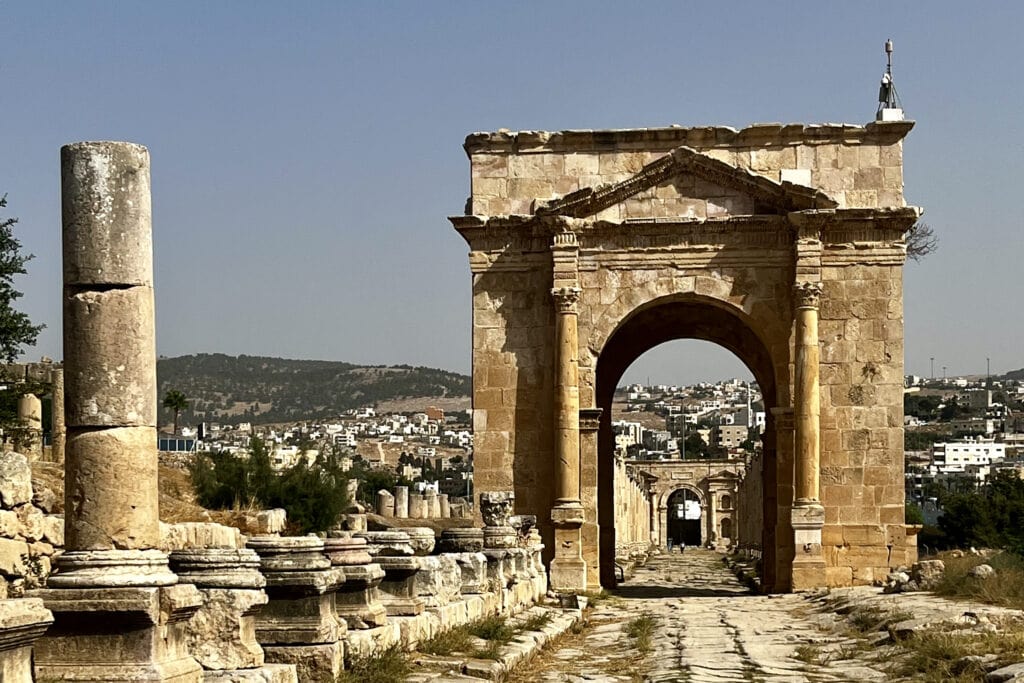

Dead Sea
After touring the ruins of Jerash, we set off for our drive to the Dead Sea, covering approximately 95 kilometers in about 1.5 hours. Our accommodation was booked in one of the apartments at Samarah Dead Sea Resort. We proceeded through the resort’s front gate, where our host awaited us and guided us to the private parking lot.
After stopping at Samarah Mall for lunch, we later checked into our accommodation. We spent the afternoon floating in the Dead Sea, applying to rejuvenate Dead Sea mud as well as enjoying the resort swimming pools.
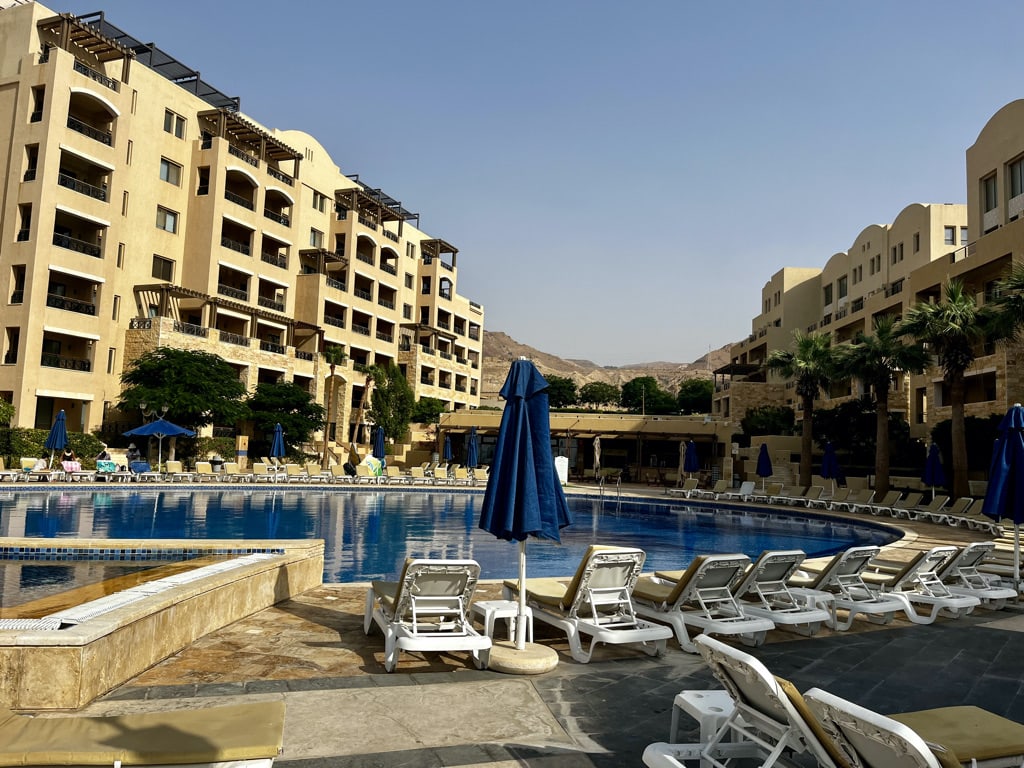
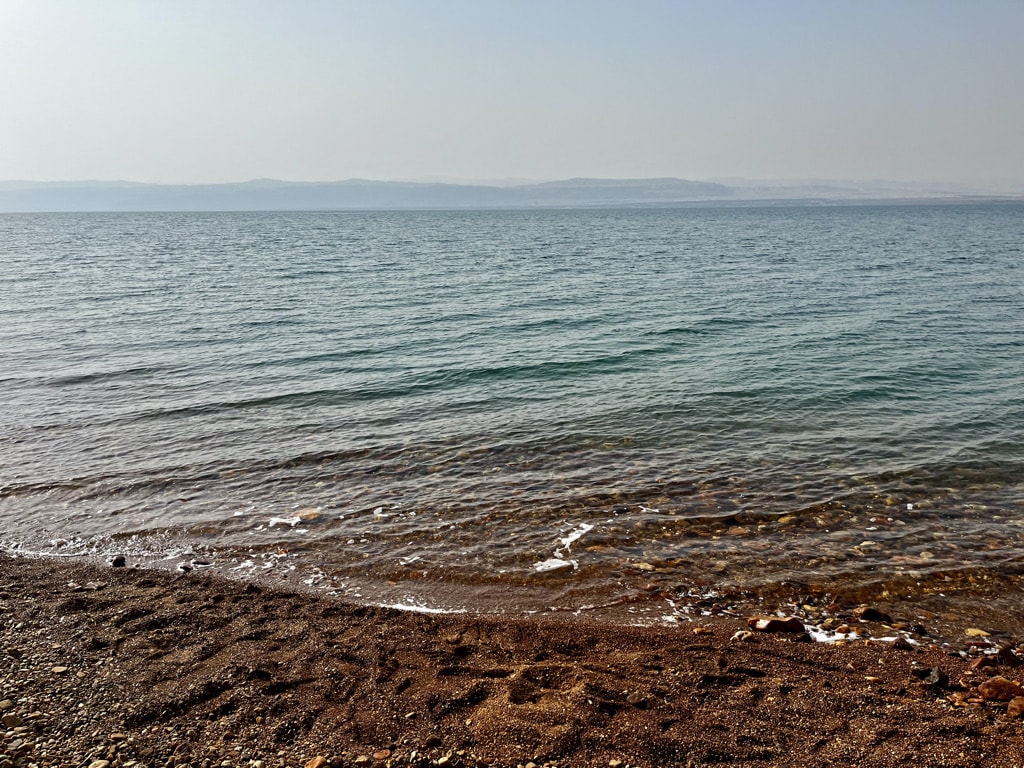

Day 3: Dead Sea – Kerak Castle – Wadi Musa
The following day, we resumed our journey, sticking to the route along the Dead Sea and making our way to Wadi Mujib. We were eager to explore one of their adventure trails, but unfortunately, we discovered that the trails were restricted to adults aged 18 and above, and we had our teenage daughters with us. While this was fairly disappointing, I quickly came up with an alternative plan: a visit to Kerak Castle.
The drive from Samarah Dead Sea Resort to Kerak took approximately 1.5 hours. The journey was pretty interesting as the city sits at an elevation of about 1000 meters above sea level, while Samarah Dead Sea Resort is situated at -390 meters below sea level.
We parked our car in the Kerak Castle car park, which isn’t the official parking area you might expect at the castle entrance. It’s a private space where parking comes at a cost unless you opt to dine at the owner’s restaurant. Given the owner’s hospitality, we chose to visit the restaurant and enjoy the local meal after the castle visit.
Kerak Castle
We accessed the castle by showing our Jordan Pass.
The castle sits on a hilltop, providing great views of the surrounding area.
Originating in the 12th century, the castle underwent continuous expansion and fortification by various rulers, such as the Crusaders and the Mamluks. Its strategic positioning along the historic trade routes connecting Egypt and Syria played a pivotal role in the medieval conflicts between Crusaders and Muslims in the region.



Wadi Musa
Following lunch, we started our drive to Wadi Musa, the town next to the ancient city of Petra. Our route from Kerak led us to the Desert Highway (Highway 15), the primary thoroughfare linking the north and south of Jordan. The drive covered approximately 180 kilometers and took around 2.5 hours.
There are many places to stay in Wadi Musa, from expensive hotels right next to the entrance of Petra to different private apartments scattered around the town. We booked our accomodation with Stay Classy Apartments. The parking was available right in front of the house and the Petra visitors parking was about 5min drive.
Day 4: Ancient City of Petra
Petra is the ancient Nabataean caravan city, situated between the Red Sea and the Dead Sea. It was an important crossroads between Arabia, Egypt, and Syria-Phoenicia. It is a UNESCO World Heritage Site since 1985. Petra is sometimes called the ‘Lost City’, as it was completely lost to the Western world until the Swiss traveler, Johann Ludwig Burckhardt rediscovered it in 1812.
To avoid crowds and the heat, it’s good to arrive in Petra early in the morning.
We parked our car at the free parking area located in front of the visitor center.
As you enter the area, you’ll see the ticket office. Even if you have your Jordan Pass, it’s necessary to proceed there. Upon presenting the pass, they will issue tickets for entry into Petra town. Since we were unaware of this process, we had to backtrack from the entry point.
What did we explore in Petra:
After entering Petra, we walked on a dirt road toward the main city. On the way, we passed by the first of many beautiful sights, The Obelisk Tomb, the burial place the Nabateans built around 40-70AD, and Bab as-Siq Triclinium. The triclinium is a dining room with three benches on which the guests reclined while feasting.



The Siq
After a short walk, we arrived at the Siq, a breathtaking gorge marking the main entrance to Petra. Local vendors near the entrance provided services such as horse rides, but we opted not to take advantage of these offers and continued into the gorge. I must admit, the experience was truly breathtaking. The towering walls of the Siq shielded us from the sun, providing a cool environment not just in the morning but also as we exited in the early afternoon when concluding our visit to Petra.

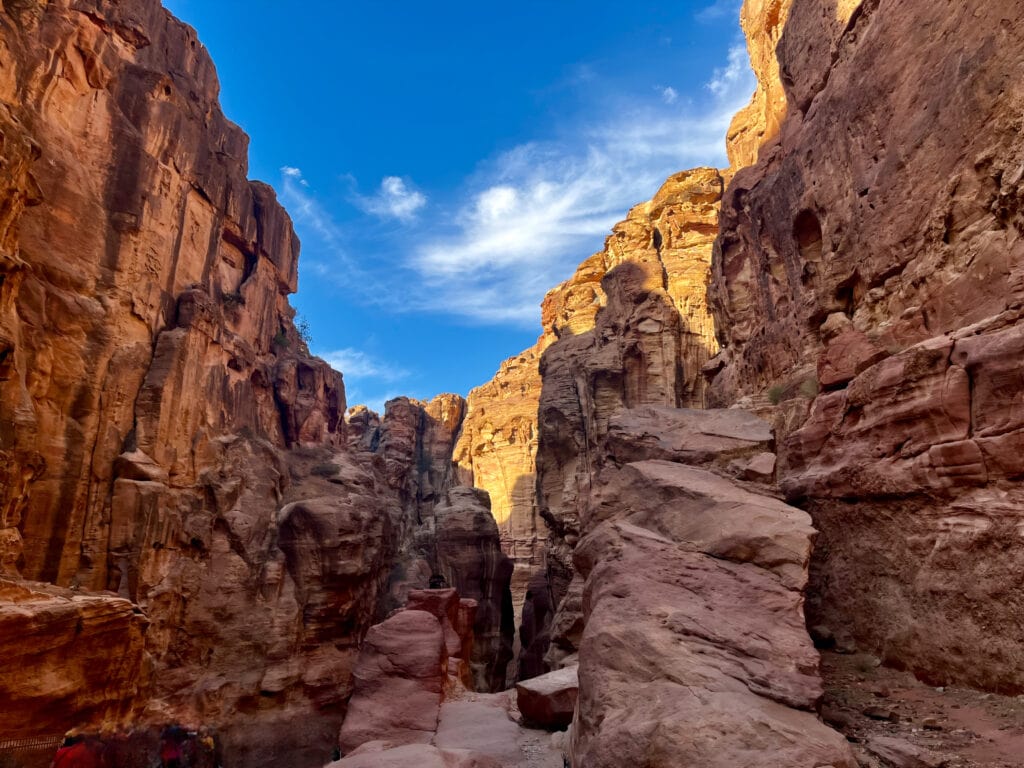

The Treasury
At the end of The Siq Gorge is the iconic place that comes to mind when you mention Petra: The Treasury. The images of this site are widely recognized, and for good reason—it’s truly amazing.
The Treasury, known as Al-Khazneh in Arabic, is a rock-cut tomb constructed as a mausoleum and crypt at the start of the 1st century AD. According to local legend, there is a suggestion that “ancient pharaonic treasures” were concealed in the urn positioned right at the top of the tomb.
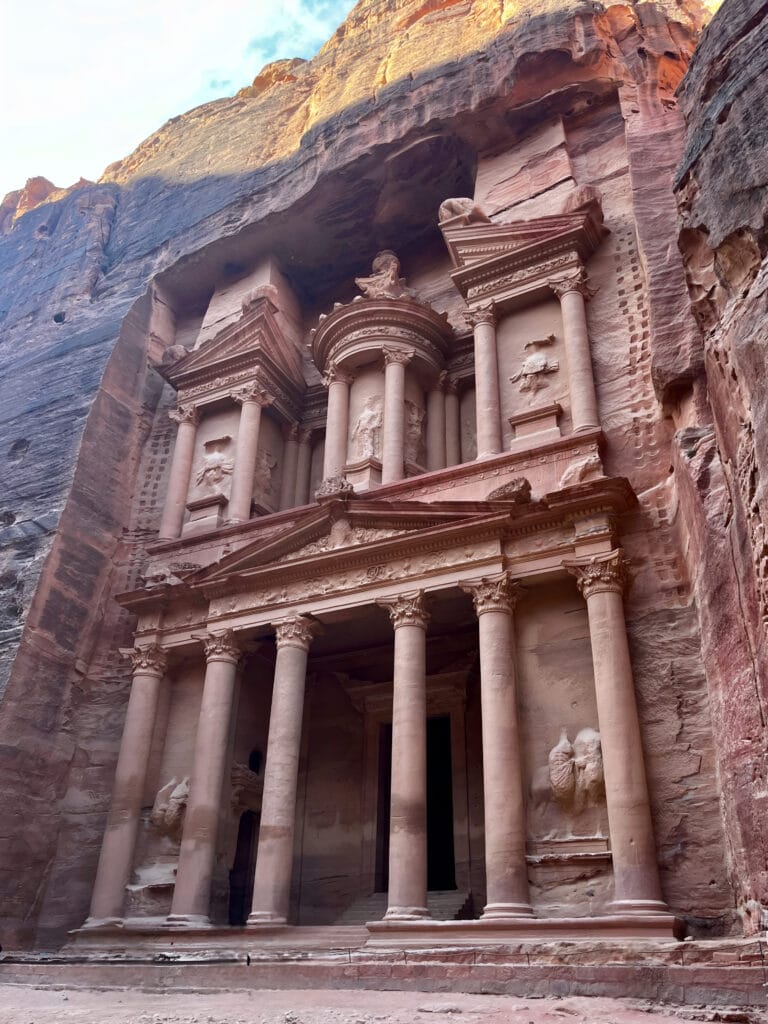
The Streets of Facades
It serve as the primary thoroughfare extending from the Treasury into the ancient city. Along this route, numerous tombs and remnants of ancient Nabatean houses can be found. We were amused by the entrepreneurial spirit of the local Bedouins with one particular highlight – the Starbucks cave,
To manage expectations—don’t anticipate a traditional Starbucks cappuccino experience here. They only offers coffee from the Starbucks coffee pods 😀.


The Theater
It was constructed in the first century AD. A big part of the theater was carved out of solid rock. The theater’s auditorium consists of three horizontal sections of seats separated by passageways and seven stairways to ascend. The theater could accommodate approximately 8500 people

The Royal Tombs
Opposite the Theather is the cliff where the Royal Toms were carved into. Reaching the Royal Toms takes a bit of climbing but it is definitely worth it. The tombs served as the final resting places for Nabataean kings over 2,300 years ago.
Exploring the interiors of these tombs offers a unique experience, allowing one to feel the vibe of those places.



While there’s plenty more to explore in Petra, I must confess that after approximately six hours under the sun in this stunning ancient city, we gave it a rain check and started returning back to the parking place while cooling down in the Siq gorge on the way.
Day 5: Wadi Rum
The drive from Wadi Musa to Wadi Rum, the famous desert in Jordan, takes about 2 hours. While planning our itinerary, I contemplated spending two nights in the desert. Eventually, I decided to reduce it to just one night, a choice I believe was correct.
Based on our experience, I would recommend the ideal way to visit Wadi Rum is to arrive after lunch and take the afternoon 4-hour drive. Our drive commenced at 3 pm, and judging by the presence of people and cars from other camps, it seems that they all start around that time. We arrived a bit early to Wadi Rum, settled in the camp, but, honestly, there isn’t much to do except wait for the drive.
We stayed at Wadi Rum Bedouin Camp. However, with numerous camps scattered throughout the desert, there’s a wide variety to cater to individual preferences.
It is not permitted to drive in the Wadi Rum desert independently. The individual from the Wadi Rum Bedouin camp coordinated to meet us in the village. Before reaching the village, we had to go through the Wadi Rum visitor center, situated near the village on the main road. At the gate, we were halted and directed to their visitor office to showcase our Jordan passes.
Upon meeting our local guide in Wadi Rum, he drove us in a 4×4 truck to the camp, leaving our car securely parked on their premises.


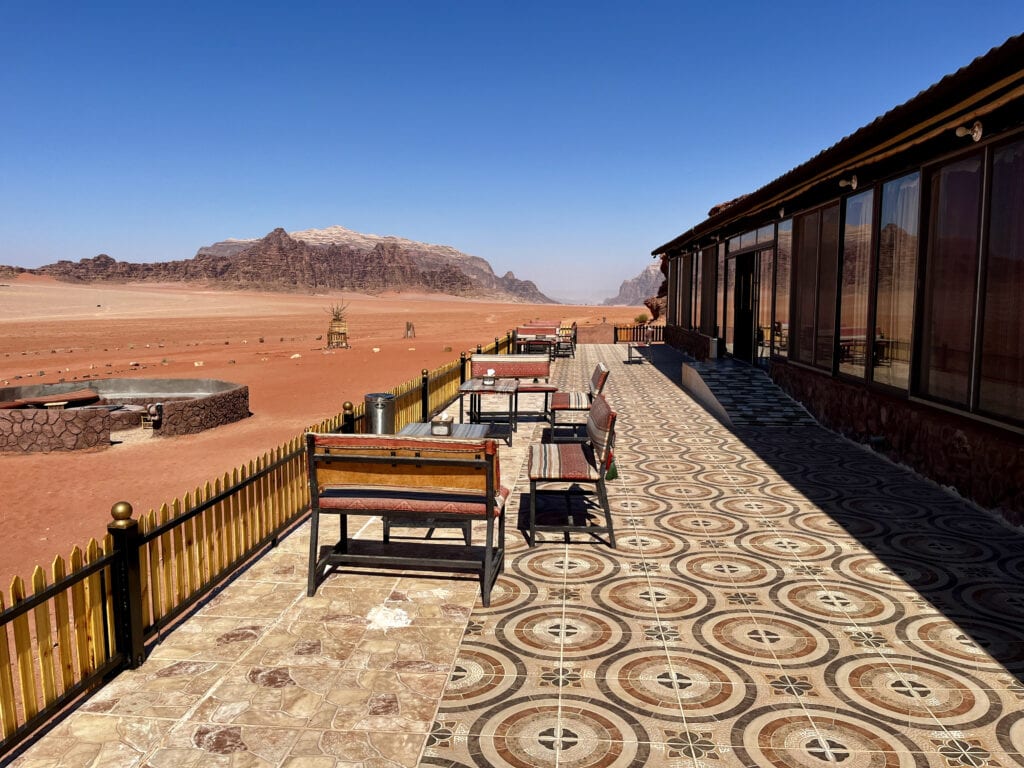
Our afternoon drive through the desert was incredible. It blended the thrill of driving with on-foot exploration, finished by watching sunset while drinking a cup of Bedouin tea.



Day 6: Aqaba – Tala Bay Aqaba
We explored numerous cultural and natural landmarks during the earlier days of our journey, so on day 6, it was time to head to Aqaba for some beach relaxation.
Departing from Wadi Rum in the morning after enjoying breakfast at the camp, the drive to Aqaba via the Desert Highway took approximately 1 hour.
Upon arrival in Aqaba, we left the car at the Free City Center parking near the beachfront. We wanted to explore Aqaba before heading to our final destination, Tala Bay Resort.
Walking along the Al-Ghandour Beach promenade, we made our way to Aqaba Castle. This Mamluk and Ottoman fortified caravanserai, situated on the pilgrimage route to Mecca and Medina, has preserved its current form primarily from the 16th century.
After exploring Aqaba, we drove to Tala Bay Resort, our final destination on this road trip to Jordan.


Days 7-8: Tala Bay Resort
Why did I choose the Tala Bay Resort over the stay in Aqaba?
Tala Bay, located about 20km from Aqaba, offers a comprehensive resort experience with beaches, restaurants, swimming pools, and shops. After we explored Aqaba, I was pleased with our decision to stay at Tala Bay. Unlike Aqaba, where public beaches are used by locals and might not be suitable for standard beach activities, Tala Bay provides a more resort-like atmosphere.
During our accommodation research in Aqaba, we noticed that many hotels offer transfers to the Berenice Beach Club, a paid private club located approximately 10km from Aqaba in the direction of Tala Bay.
We rented an apartment with one of the many swimming pools just steps away, while the beach was conveniently down the road. It was a delight to soak in the sun before returning to the onset of the European winter.



Day 9: Amman – traveling home from our road trip to Jordan
Our final day was a travel day. Covering approximately 320 km on the Desert Highway, the journey back to Amman took around 4 hours. We returned our rental car to the Monte Carlo Car Rental office, conveniently situated just a 5-minute drive from the Airport Departure terminal. After completing the paperwork, we were transported to the airport (no need to wait for a shuttle bus).
Another fantastic trip. And I have already planned a trip to our next destination.